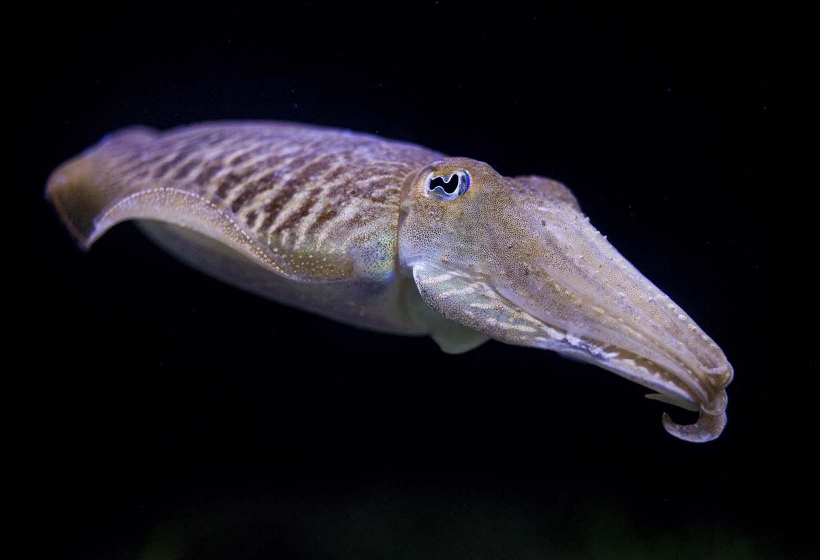Common cuttlefish

Biology
A cuttlefish can reach 50 centimetres and is found at depths up to 200 meters. During the day, the cuttlefish stays buried in sandy bottoms and only becomes active at sunset. Despite its harmless appearance, it is a shrewd and efficient predator. Thanks to its ability to change colour, it gets near its prey (molluscs, crustaceans and fish) cunningly and without being seen. It then captures them with two tentacles especially modified for this purpose, which are rapidly extended. Its strong beak cuts the prey while a paralysing toxin is injected. To defend itself it has an ink sack which ejects ink in order to fool oncoming predators. During mating season, the males cover themselves with an attractive zebra pattern and modify one of their tentacles in order to fertilise the female, which attaches the clusters of black eggs to algae.
Conservation
The common cuttlefish is the focus of large-scale commercial fisheries, particularly in the Mediterranean Sea and off the west coast of Africa and may be close to being overexploited in some regions (e.g. the Mediterranean Sea). It is also caught as by catch.
Curiosities
Their blood is bluish green because it has a protein called hemocyanin instead of hemoglobin. They have three separate hearts, because hemocyanin carries much less oxygen than hemoglobin.
